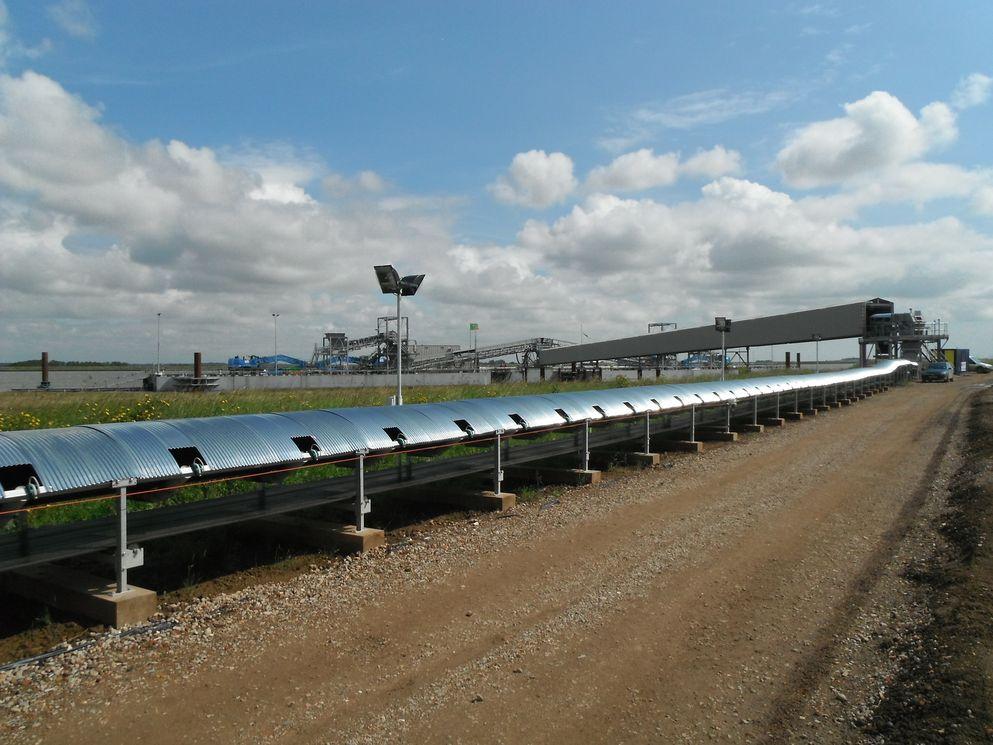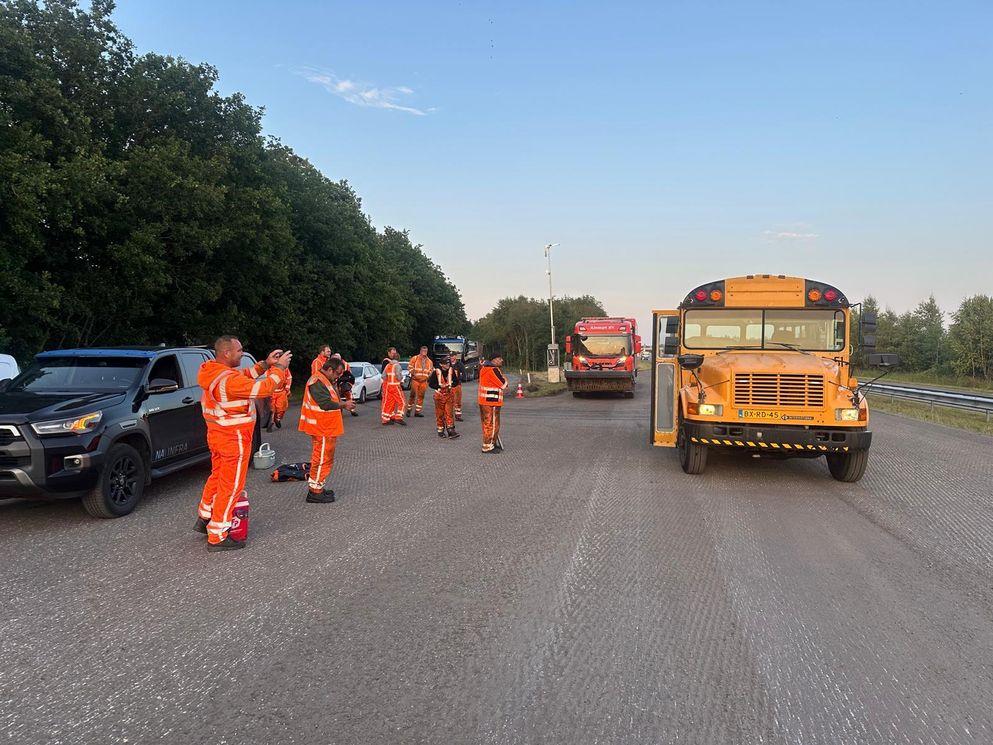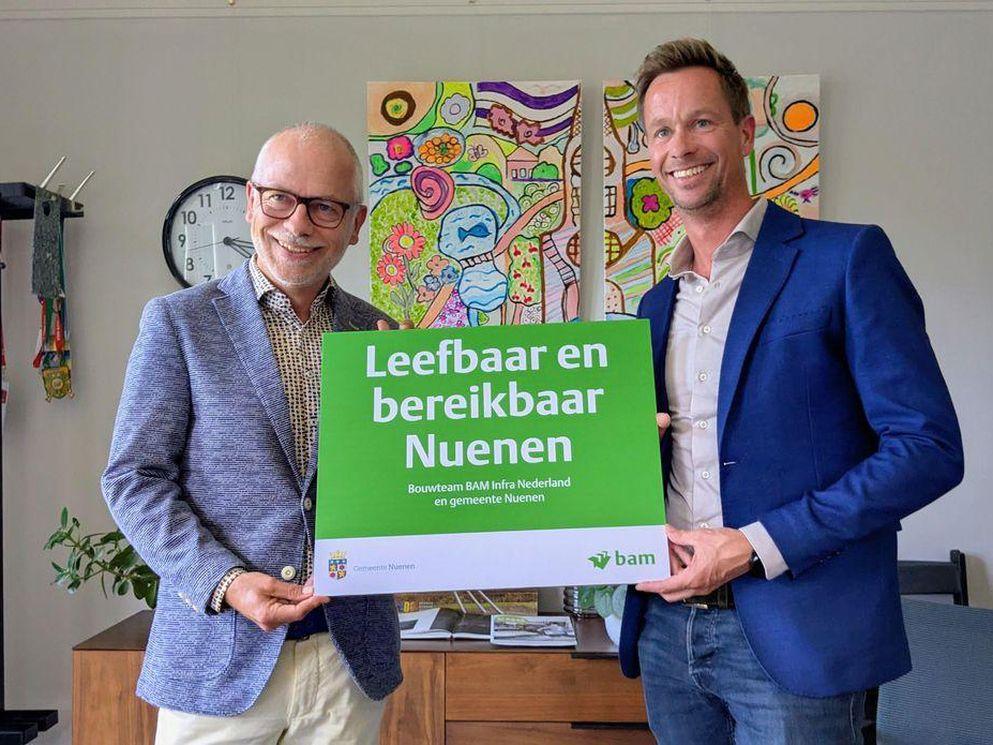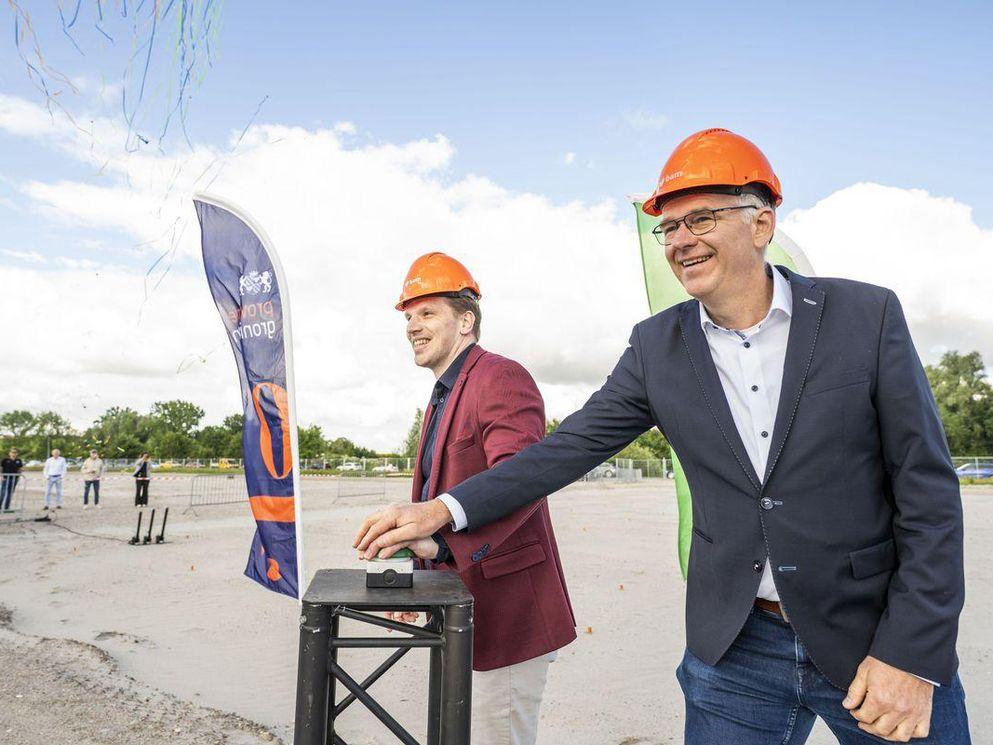Wallasea Island jetty completed as Crossrail helps RSPB shape Europe’s largest new nature reserve

(Press release Crossrail:) London, 3 August 2012 - Crossrail has taken another step towards the creation of a new 1,500 acre RSPB nature reserve with the completion of a new 180 metre jetty at Wallasea Island in Essex. The jetty will receive in the order of 4.5 million tonnes of material excavated during Crossrail’s tunnelling operations in London.
The jetty, constructed by BAM Nuttall, comprises two 800 tonne steel pontoons, each 15 metres wide, and is able to accommodate two 90 metre, 2,500 tonne ships simultaneously. At peak, two unloading machines per pontoon will service four ships and unload up to 10,000 tonnes of material over a 24 hour period.
An 800 metre conveyor system to transport the material within the site has also been completed. The conveyor stretches from the jetty to a holding point for the excavated material, from which the material will be distributed around the site by truck.
Excavated material will be unloaded directly from the ship on to the conveyor system. To accommodate tidal movements of up to six metres, the conveyor comprises a flexible section on the pontoon connecting to a fixed shore section.
The RSPB nature reserve will be one of the largest new wetland nature habitats in Europe, providing an environment specifically tailored for fish, reptiles, insects, mammals and birds and acting as a tourist attraction and recreational resource for local people.
Siobán Wall, Crossrail’s Wallasea Project Manager, said: ‘Construction of the Crossrail jetty at Wallasea Island is now complete and ready to receive the first shipments of excavated material later this summer. This is an important milestone in the use of rail and ship to sustainably transport excavated material from London to create a new RSPB nature reserve.’
Excavated material from Crossrail’s western tunnels will be transported by freight train to Northfleet where it will be transferred to ship for onward journey to Wallasea Island. The first trainload of material ran from Westbourne Park in May; at the peak of tunnelling up to five freight trains a day will operate. The first of over 2,000 ship loads to Wallasea Island will arrive later this summer.
Elsewhere along the Crossrail route, the first consignment of excavated material from the construction of Liverpool Street station into Crossrail’s new Docklands Transfer Site at Barking Riverside jetty occurred on 1 June. Excavated material from Crossrail’s station and shaft works will also be shipped to Wallasea from this site.
Shipments of excavated material from the eastern running tunnels access shafts at Limmo Peninsula to Wallasea will commence from Instone Wharf (directly opposite Greenwich Peninsula and the 02) following dredging operations and the construction of a new ship loading facility.
Further information: Crossrail Press Office, 020 3229 9552.
Notes to editors
- Wallasea Island is located eight miles north of Southend-on-Sea.
- The contract (C806) to construct the jetty at Wallasea Island was awarded to BAM Nuttall. The C807 Marine Transportation contract to transport excavated material from Northfleet, Kent to Wallasea Island, Essex was awarded to a Joint Venture comprising BAM Nuttall Ltd / Van Oord UK Ltd.
- Wallasea Island Wild Coast project is a landmark conservation and engineering scheme, on a scale never before attempted in the UK and the largest of its type in Europe. The aim of this project is to combat the threats from climate change and coastal flooding by recreating the ancient wetland landscape of mudflats and saltmarsh, lagoons and pasture. It will also help to compensate for the loss of such tidal habitats elsewhere in England.
- Crossrail tunnelling commenced at Royal Oak in May 2012. Tunnelling for Crossrail will produce in the region of 6 million tonnes of material which will be excavated from constructing 21km of twin-bore tunnel. Close to 100% of the excavated material is expected to be clean, uncontaminated and reusable elsewhere.
- Crossrail’s eastern tunnels contractor Dragados-Sisk Joint Venture has applied to the Marine Management Organisation for a marine licence to undertake dredging of an area of riverbed to enable construction and safe operation of a barge loading/unloading facility on the eastern side of Bow Creek.
About Crossrail
- The total funding envelope available to deliver Crossrail is £14.8 billion.
- Crossrail will run 118 km from Maidenhead and Heathrow in the west, through new twin-bore 21 km tunnels under central London to Shenfield and Abbey Wood in the east. It will bring an additional 1.5 million people within 45 minutes commuting distance of London's key business districts.
- When Crossrail opens it will increase London's rail-based transport network capacity by 10%, supporting regeneration across the capital, helping to secure London's position as a world leading financial centre, and cutting journey times across the city.
- Crossrail is being delivered by Crossrail Limited (CRL). CRL is a wholly owned subsidiary of Transport for London. Crossrail is jointly sponsored by the Department for Transport and Transport for London.



